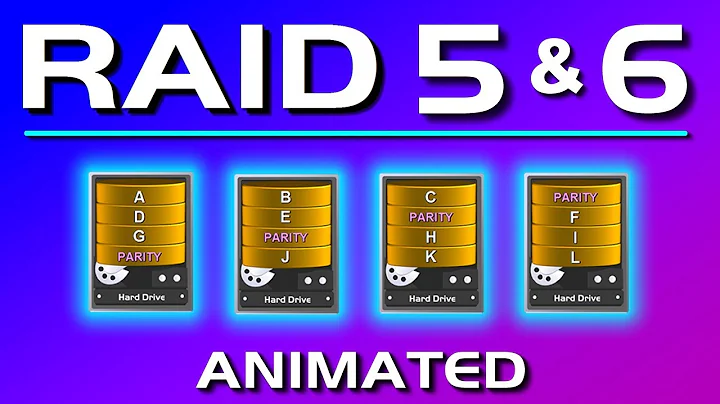understanding RAID Level 5
Solution 1
If I'm reading your question correctly, you are asking how the 100GB of data would be stored on the RAID 5?
RAID 5 works by striping data across multiple disks (must be at least 3 disks), and also performing a parity calculation. For this reason, a RAID 5 is excellent with Read speeds, but slow for Writes.
Your 100GB of data will be written across all disks in a RAID 5. In addition to that, a parity calculation will be performed across all of the data, and distributed across all of the disks in the array. This way, if any single disk fails, all of the data that was on it can be re-created from the Parity information.
However, the parity calculation does increase the space required to store the data. In a 3-disk array, 100GB of data will actually consume 133GB. In a 4 disk array it would be 125GB. But that's not really important - all that's important is that you remember that in a RAID 5, your available space is N-1. 100GB will look like 100GB - the additional space required is already calculated in to the extra drive in the array.
Does that help?
Solution 2
Wikipedia actually has a really thorough walk-through on RAID technology and raid levels.
The REALLY short version is it combines several physical hard disks and creates one(or more) logical hard disks, that can be configured to backup each others data across multiple hard drives, or to span the entire group.
Raid5 is N=(N-1), so if you had 5x 100GB disks, You'd have a 400GB group.
Solution 3
It's simpler than that;
Total storage used = space + (space/disks); i.e. 100 + (100/3) = 133, meaning 44 per disk in a three disk R5 array.
Solution 4
Note that the number 5 in RAID5 has nothing to do with the number of disks involved.
It's just a name of this specific setup, which distributes parity information across all disks. You need a minimum of 3 disks, but can use an unlimited number of disks theoretically (in practice, this number is constrained by RAID controller limits). Total space you get from the array corresponds to S * (n-1), where S is the size of the smallest disk, and n is the number of disks.
For example, 4 disks of 1Tb will give you 3Tb of usable space in RAID5.
Wikipedia explains how the setup works in more detail.

Related videos on Youtube
Rajeev
Updated on September 17, 2022Comments
-
Rajeev almost 2 years
Just wanted to clear my understanding on RAID 5, suppose we have 100 GB of data to be stored in SAN in RAID level 5, does the actual storage means 100 *5= 500 GB ?, or it is the 100 GB only which is stored in different 5 dsiks? please make me understand. Thanks
-
Jes almost 14 yearsThis is actually a very confusing question. Are you asking how data is stored in a RAID 5? How a RAID 5 works? How to calculate volume space in a RAID 5? See my answer below for what I think you are actually asking...
-
-
Scoregraphic almost 14 yearsIf he has 1x 100GB and 4x 500GB, he only has a 400GB group and the rest is lost.
-
 dannymilsom almost 14 yearsHeh. I guess if someone decided to RAID a bunch of different sized drives, but thats kinda asking for more trouble then its worth IMHO. Not to mention if they're different speeds. ~.~
dannymilsom almost 14 yearsHeh. I guess if someone decided to RAID a bunch of different sized drives, but thats kinda asking for more trouble then its worth IMHO. Not to mention if they're different speeds. ~.~ -
Luke404 almost 14 yearsHe's not talking about 100GB disks but about 100GB of data, he's not either talking about the number of disks, so I'd rather not talk about 100*4 as it could be misleading.
-
Pietro Battiston over 8 yearsThe sizes estimation is not entirely correct. In a 3-disk array, 133 GB of disks will actually provide 2/3 * 133 ~ 88 GB, not 100 GB. Or vice-versa, to have 100 GB you will need 150 GB of disks. GruffTech's answer has it the right way.
-
Pietro Battiston over 8 yearsMmhh... I think you meant space = total storage used - (total storage used/disks):




